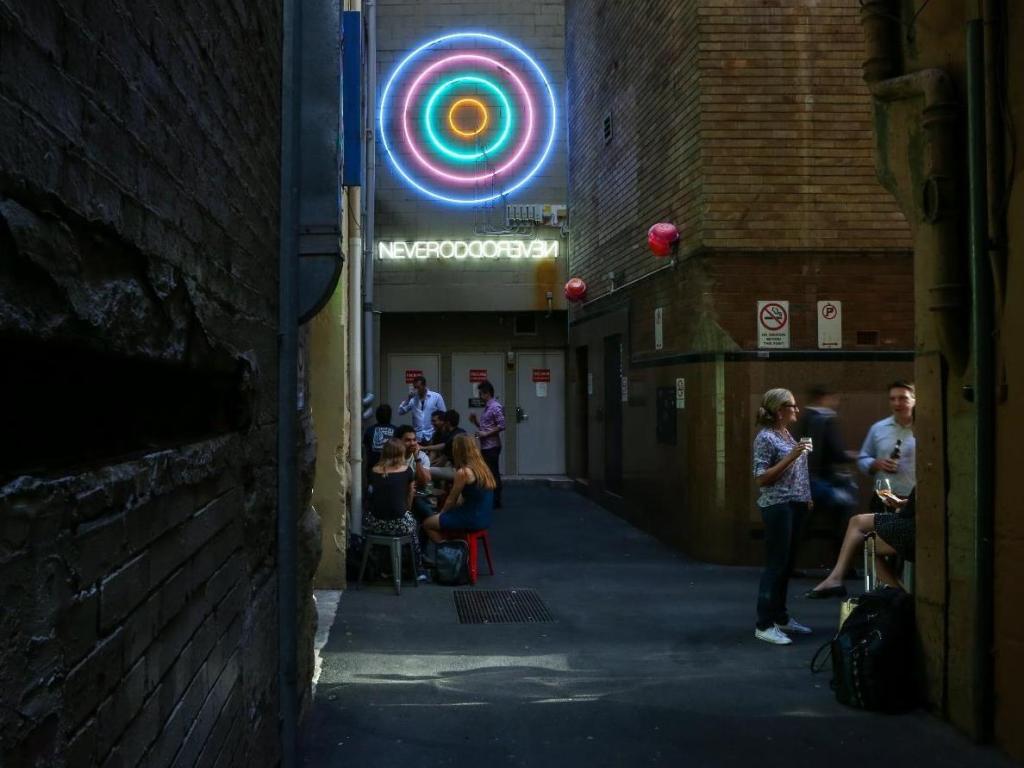Newell Harry Circle/s in the round for (miles and miles +1) 2000. Photo by Katherine Griffiths.
Laneways used to be seen as dirty, dark and dangerous, but over the past 20 years they have gained a new cool. Public art projects have turned laneways into a destination in their own right, through large scale commissions and interactive artworks which challenge our sense of civic space.
With the development of the light rail through Sydney, more people than ever before will travel through the inner city by foot. The city’s forgotten laneways are ripe for an artistic intervention. The City of Sydney is calling for public art proposals to feature in three of five laneways identified in Sydney’s city centre.
Permanent projects
While many laneway art projects are temporary or ephemeral, this new Expression of Interest offers an opportunity to create permanent works of public art in the heart of the city. Both individual artists and artist-lead multidisciplinary teams are invited to submit innovative concepts. Artists are encouraged to submit works that are flexible and respond to the space and times in which we live, encouraging interaction and engagement from future generations of artists, thinkers, activists and members of the general public.
The current condition of the laneways ranges from the recently upgraded to the blissfully neglected. Some have both cars and pedestrians, some have shops, and some are simply a means of getting from one place to another.
Laneways ripe for intervention
Public spaces, public voices
Public art encourages people to think in new ways about civic spaces.. A striking example is Lamp for Mary, an artwork by Mikala Dwyer located in Mary Place in Surry Hills. In January 1996, a woman named Mary was abused for her sexuality, then beaten, raped and left for dead in what was then called Flood Lane. She later found out that people in nearby buildings had seen and heard the attack but did not call police.
The current artwork, installed in 2011, replaced the original community artwork installed in 1997, as the result of a joint community initiative between the South City Council and the Lesbian and Gay Anti Violence Project to commemorate the violent act. The artwork takes the form of a large glowing pink street lamp, together with accompanying text.

Mikala Dwyer Lamp for Mary 2011. Photo by Richard Glover.
The five laneways are Reiby Place; Curtin Place and adjoining Hamilton and Little Hunter Streets; narrow T-shaped Council Place in mid-city; the bricked Market Row and historic Mullins Street; and Parker Lane, which is dominated by the Brutalist-style Haymarket Telephone Exchange. All the lanes are located between Circular Quay to the north and Central Station to the south. Artists are encouraged to use the sites to their advantage and make use of the unique characteristics of each laneway.
The selection of artists will be conducted over two stages, with up to eight artists shortlisted from this first stage Expression of Interest and paid a fee of $3,000 + GST to further develop their ideas as part of the second stage where up to three artists will be commissioned . The Expression of Interest is now closed.





